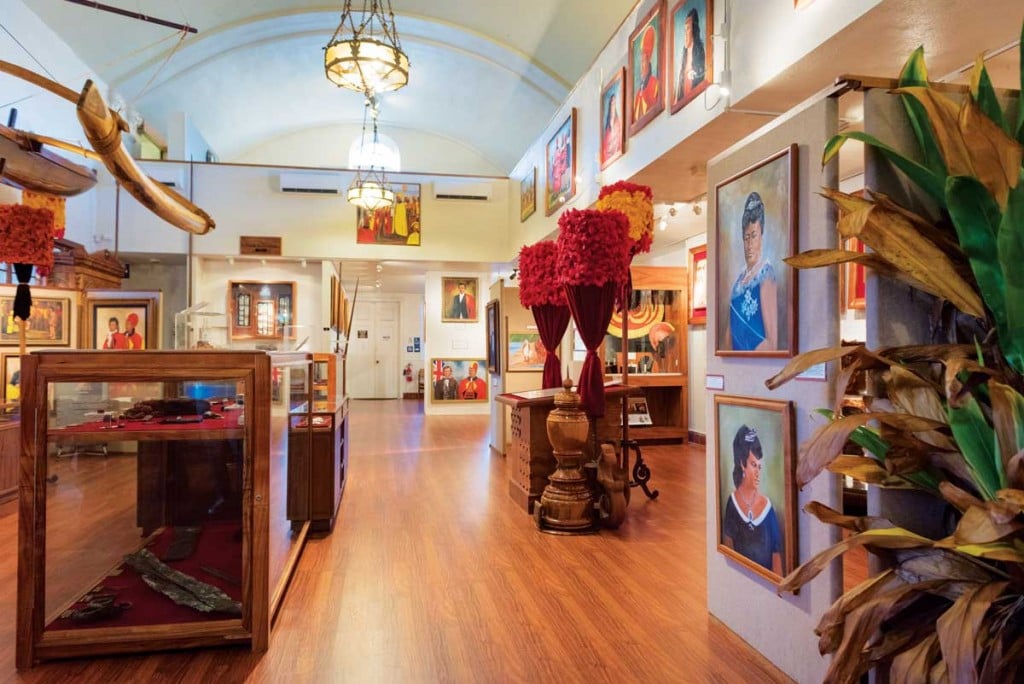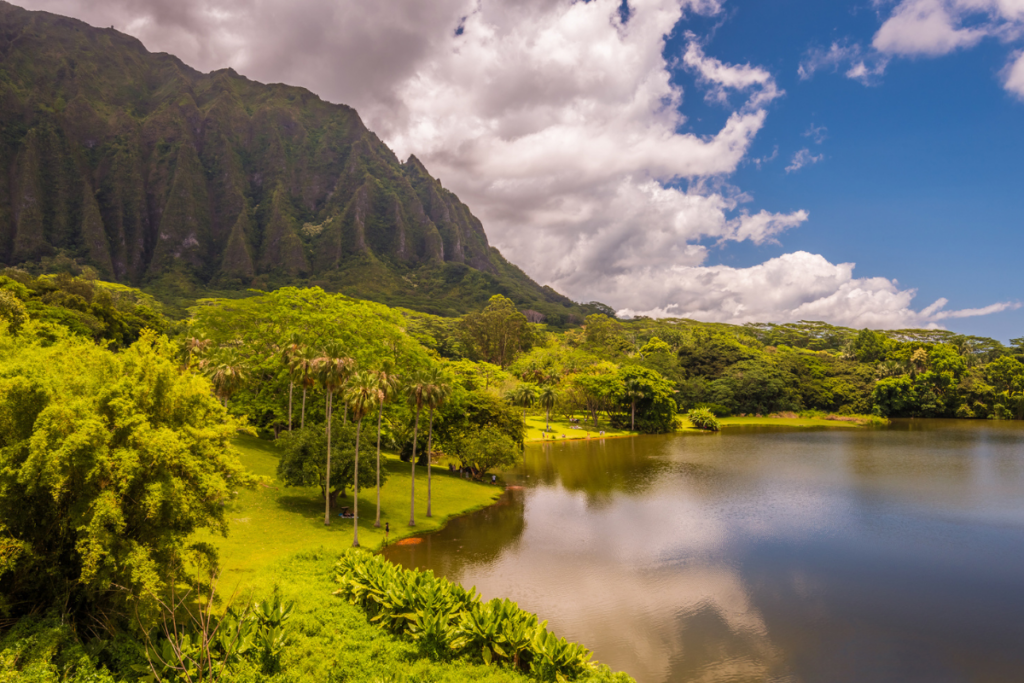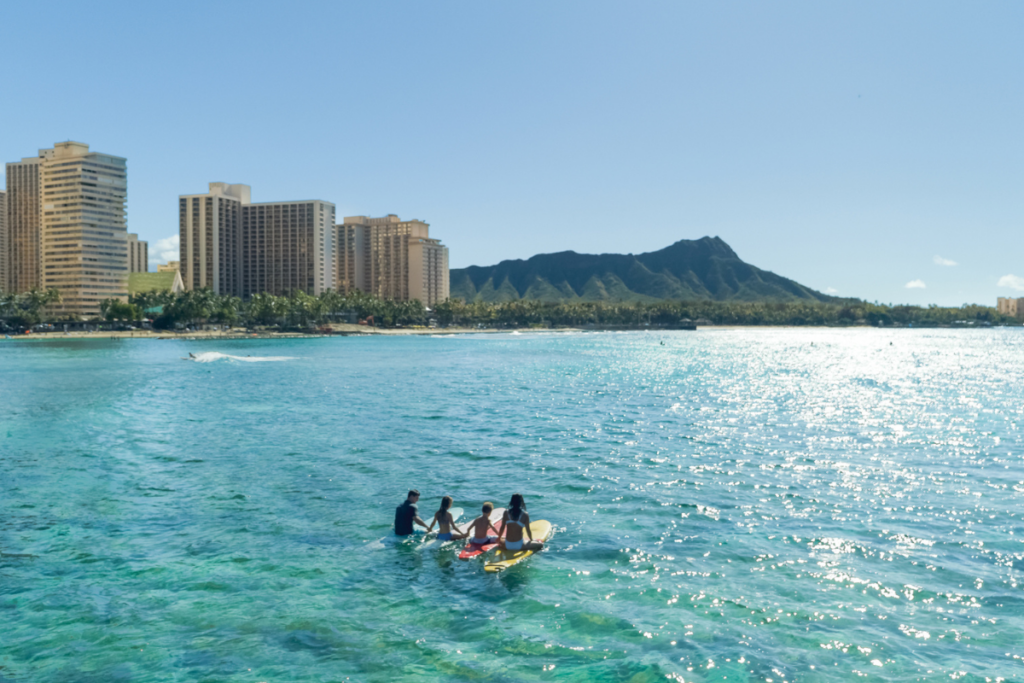Kauai Museum preserves the legacy of King Kaumualii, the island’s last chief
The Kauai Museum tells stories of the island’s histories, from tales of warfare to everyday life.

Some people wanted him dead. When King Kaumualii, the last ruling chief of Kauai and Niihau, peacefully agreed to become a vassal of King Kamehameha, some warriors preferred bloodshed to diplomacy.
Kamehameha couldn’t conquer the Kingdom of Kauai and Niihau through warfare, though he tried. After uniting Hawaii, Maui, Lanai, Kahoolawe and Oahu in notoriously bloody battles, such as the Battle of Kepaniwai in Maui’s Iao Valley, Kamehameha set out to satisfy his desire to reign over the entire Hawaiian archipelago.
A prophet had told Kamehameha not to invade Kauai but he didn’t listen. In 1796, Kamehameha’s men had constructed over 800 canoe, only to be swamped and sunk in a storm a quarter of the way to Kauai. In 1804, while preparing for a second invasion attempt, an epidemic, believed to be typhoid or dysentery, killed the majority of Kamehameha’s army and almost took his own life.
“It’s because of Kauai pule oo,” says Chucky Boy Chock, the executive director of the Kauai Museum, offering a reason why Kamehameha could not conquer Kauai. “It means ‘Kauai of powerful prayers.’ Even today, it still has that.”
We’re in the main gallery of the Kauai Museum in Lihue, which has changed quite a bit since I visited last year. There is a noticeable amount of paintings by artist Evelyn Ritter—a large mural greeted me when I walked in, followed by the eye-catching royal portraits hanging in the center of the room and illustrated scenes from King Kaumualii’s life. From about 1796, Kauai was ruled by Kaumualii, a chief with more royal lineage than Kamehameha himself.

Evelyn Ritter, to produce a portrait of King Kaumualii.
Photo: Mallory Roe
“Everything in here ties to him,” says Chock of the main gallery. “He was a very compassionate and loving king, and he cared for his people a lot.”
I follow Chock into the adjacent Hawaiian room, which has a relatively large collection of traditional artifacts. What I like about the Kauai Museum in comparison to Oahu’s much larger Bishop Museum, is that the focus is mainly on Kauai and Niihau. You’re given just enough to look at so you have more time to browse and absorb the information there.
One of the first displays in the room are the poi pounders. These large stone tools were used strictly for the purpose of mashing kalo (taro) into poi, a smooth, sticky paste that was the Native Hawaiians’ staple food. It was a repetitive job that required a lot of arm strength. The poi pounders found on Kauai and Niihau are shaped differently than the ones on the other Islands. They’re cut in the shape of a ring with a hole cut through the stone and in the shape of a pedestal—these are two-handed poi pounders.

Photo: Mallory Roe
“There were years of study as to why Kauai and Niihau had an abundance of these, and turns out they were made here,” says Chock. This was a significant discovery that led researchers to believe these poi pounders were made for women. “The Kauai women would make poi. It’s heavy work, you know, those poi pounders are heavy. That is what makes it really special. On the other Islands, it was more of a man’s job.”
Other significant artifacts at the museum are those strictly from Niihau: the intricate designs created on ipu (gourds) are unlike any produced elsewhere, and the island’s famed makaloa mats were known throughout Polynesia. To own a makaloa mat would elevate your social status and show your rank among chiefs. To make one is a craft that’s unfortunately been lost in time, but the preserved mats, which are all that remain of this art form, can be seen on display at the museum.
Circling back to the main gallery, I stop to look at another of Ritter’s paintings—this one of King Kaumualii meeting King Kamehameha on that historic day in 1810 when Kamehameha became ruler of all of the Islands. Below that is a portrait of Kaumualii with his son Humehume, dressed in bright red feather ahu ula (capes).
“How do we know what they look like?” I ask.
“We called Joe Aragon, who was the graphic artist for the Honolulu Police Department for 30 years,” Chock says. Aragon advised Chock to find mentions in books about Kaumualii’s looks and personality, as well as any drawings that might have been done of his kids. “There was a painting of Humehume in the 1800s, and a description in a book described Kaumualii’s look, so Joe did a sketch. He didn’t have a flat nose, he had a pointy nose,” says Chock. “This is as close as what we believe he looks like.”
In the center of the room are artifacts from the Haaheo o Hawaii (Pride of Hawaii), the royal yacht of Kamehameha’s son and ruling heir, Liholiho. It was shipwrecked in Hanalei Bay, Kauai, in 1824 after a gale forced it onto a reef. It remained there up until 1995, when Paul Johnston, a maritime curator at the Smithsonian National Museum of American History in Washington, D.C, found and excavated it. The Kauai Museum began receiving a select collection of the artifacts in 2015, and now they are permanently displayed.
Completed in 1816 for Capt. George Crowninshield, the ship, then called Cleopatra’s Barge, was sold to Liholiho in 1820 for 1 million pounds of sandalwood. Kaumualii would later be kidnapped by Liholiho on this ship in 1821, taken from Kauai to Oahu, forced into marriage by King Kamehameha’s widow Queen Regent Kaahumanu (possibly to secure domination over Kauai and Niihau), and would never be able to visit his home island again. Kaumualii died in 1824 at the age of 46.

Photo: Mallory Roe
“The cape is going to go right there,” Chock says next, pointing to the center of the gallery, right below three portraits of Kaumualii; his mother, Chiefess Kamakahelei; and favorite wife, Debora Kapule. He tells that in April the museum will unveil a traditionally made royal ahu ula, a complete replication of Kaumualii’s, however, using feathers from a Lady Amherst pheasant.
“When we do the unveiling, we’re going to have an oli (chant) about the making of it, an oli about the completion of it, and there will be a hula,” says Chock of the private event, adding that Kauai halau hula (troupe) Ka Lei Mokihana o Leinaala will be performing a competition piece at the Merrie Monarch Festival in Hilo this year in honor of the cape. Though Kaumualii’s story in life did not end as he hoped, the beloved Kauai king continues to be honored by the people of the island, through cultural traditions such as art and hula, and through the Kauai Museum.
Kauai Museum
$15 general admission. Open Mon. through Sat., 9 a.m.–4 p.m. 4428 Rice St., Lihue, (808) 245-6931, kauaimuseum.org.


